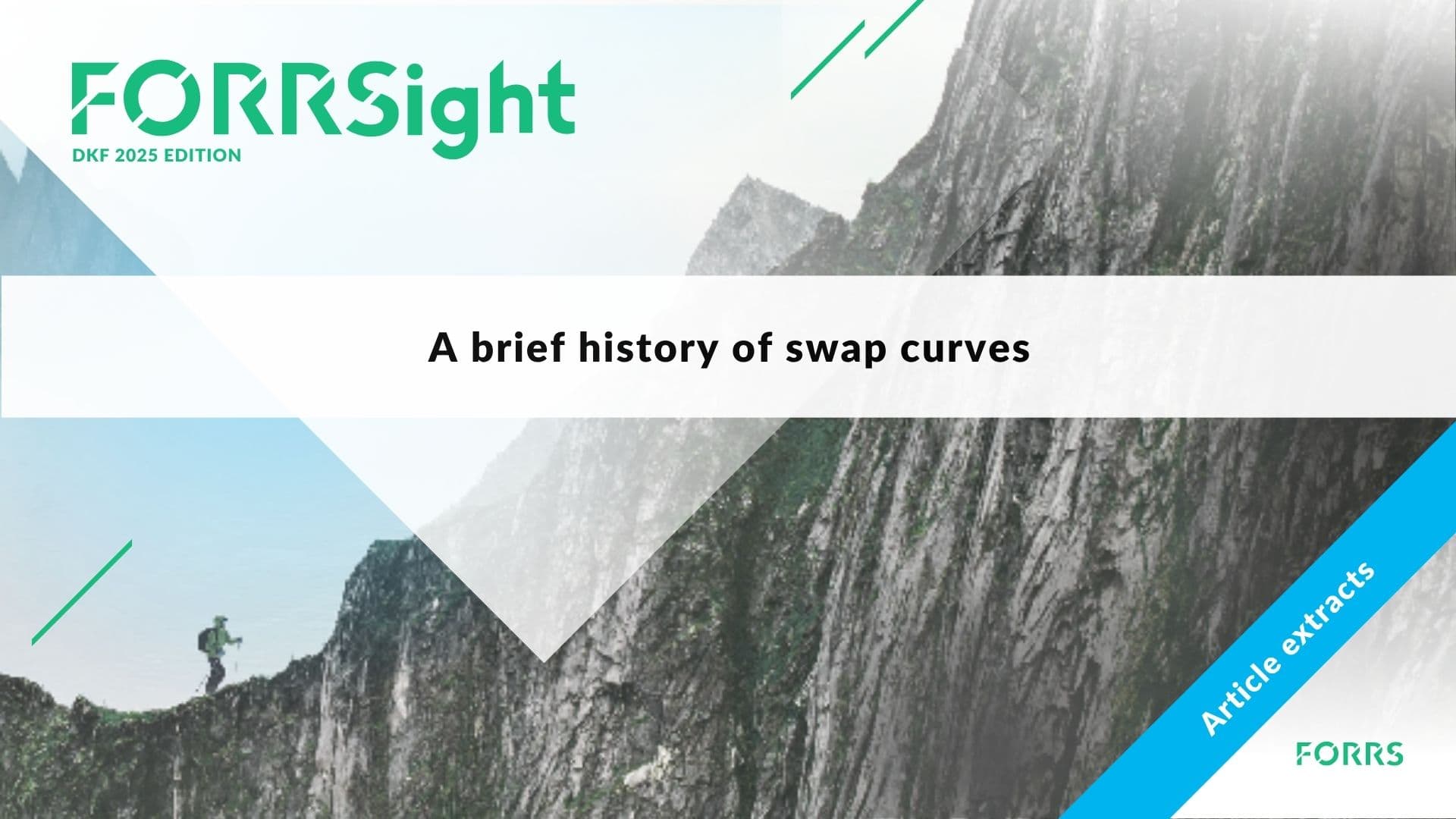25.07.2025 / 08:30
A Brief History of Swap Curves
Financial Markets

What is an interest rate swap curve? And why do we have so many different ones?
Back in 1981, the first interest rate swap transaction was traded: a cross-currency-swap transaction of fixed rate USD versus fixed rate CHF between IBM and the World Bank. At that time, no swap curve was available. Since the swap market did not exist, nobody thought about the necessity of a swap curve. The benefits for each of the parties (IBM and World Bank optimizing their funding rates, with Salomon Brothers as arranger) were obvious, so the counterparties just entered into the transaction

Whole swap curves are not directly observable market data. Pillars have to be defined, raw data have to be collected, properly transformed and interpolated.

A few years later, in 1985 World Bank traded a fixed rate versus floating rate interest rate swap. Today, this would probably be considered the most liquid OTC interest rate derivative globally. The reference rate for the float side was the three-month Treasury bill rate. The market for these products grew very quickly with available quotes for fixed versus float interest rate swaps for various maturities.
This data series of swap market rate per maturity represents the backbone of a swap curve. We can add non-swap market rates for short maturities where no swap quotes are available. This extended series gives us the so-called pillars of the swap curve. If we now transform different market quotations into a consistent quotation (for example, swap par rates, zero rates, or discount factors) via bootstrapping and agree on an inter(extra)polation method between pillars, we obtain swap market data for each business day in the future.
Why are we doing this? Swap curves have the following use cases:
▪ Pricing and valuation: Financial institutions and corporations use swap curves to price and value interest rate derivatives, including interest rate swaps themselves.
▪ Risk management: Companies use interest rate swaps to measure and manage interest rate risk. By understanding the swap curve, they can decide on the best strategies to hedge against interest rate fluctuations.
▪ Benchmarking: The swap curve serves as a benchmark for pricing various financial instruments, including corporate bonds and loans.
▪ Market sentiment: The shape and movement of the swap curve provides insights into market expectations regarding future interest rates and economic conditions. For example, an upward-sloping curve might indicate expectations of rising interest rates.
▪ Investment strategies: Investors might use the swap curve to inform their strategies related to fixed income investments, helping them decide on the duration and types of securities to include in their portfolios. Given the different interest rate levels across currencies, one might expect we should have one swap curve per currency. However, in 2025, we expect an internationally leading bank with a significant trading book size to maintain numerous swap curves, maybe 100 or more. Why? Let’s have a look at what happened.
1980s: Development of reference rates based on interbank trading
Although the first swap transaction was traded between World Bank and a Corporate, the interest rate swap market in the second half of the 1980s was dominated by transactions between banks. Not surprisingly, so-called “Interbank Offered Rates” (IBOR) became the most relevant reference rates. There were local ones like FIBOR (Frankfurt IBOR), as well as the internationally leading LIBOR (London IBOR) – though notably, FIBOR was established before LIBOR! As a result, there was a need to create separate swap curves per currency and reference rate.
1990s: Tenor spreads and currency spreads
With the availability of tenor spread swaps (for example, pay 3m float / receive 6m float on the same reference rate) in the early 1990s, it became obvious that the payment frequency of an interest rate swap influenced valuation. The driving factors for that spread included liquidity considerations and counterparty credit risk. More swap curves had to be established: 1m, 3m, 6m, and 12m curves per currency per reference rate.
Liquidity aspects led to further development. For cross-currency swaps, the potential difficulty in entering or exiting positions – especially during times of market stress – resulted in a liquidity premium for these swaps. How was that reflected in valuations? Through new swap curves that contained cross-currency spreads.
The same is true when it comes to differentiation between onshore and offshore traded interest rates, triggered by differences in regulation, liquidity, and market access.
2000’s: OIS discounting
With the derivatives markets and related volumes growing at immense speed, counterparty credit risk moved into focus. The industry found ways for mitigation, including collateral agreements (so-called credit support annexes (CSAs) under the documentation standards). Although this development began in the early 1990s, it was not until the early 2000s that first movers started reflecting it in valuations by using Overnight Index Swap (OIS) rates to discount the cash flows of collateralized derivatives.
OIS rates were used for two reasons:
- OIS discounting reflects the actual funding cost of collateralized transactions, as the collateral posted in such transactions typically earns an overnight rate.
- OIS rates are closer to overnight lending rates, which are considered closer to risk-free rates (reflecting the lower counterparty credit risk through collateralization).
Using lessons learned from the financial crisis, OIS discounting became the market standard. This brought the necessity for even more curves, also differentiated by currency of the CSA.
2010s: IBOR replacement
In 2012, several major banks admitted to manipulating LIBOR. This led to substantial fines and undermined confidence in LIBOR as a reliable benchmark. At the same time, the lack of underlying transactions for IBORs was a weakness, potentially making these references susceptible to inaccuracies, especially during periods of market stress.
Regulatory initiatives led to development of new reference rates like SOFR, €STR, SONIA or TONAR – addressing the afore mentioned issues. These reference rates are now established as transparent and robust benchmark rates. Of course we have new curves being setup in our systems for these new rates!
What have we learned and what’s next?
When you look at the past, some of these developments seem obvious, and you could wonder why the market didn’t react earlier. Some market participants did move earlier than others and made a lot of money with respective trading strategies. That’s why it makes sense to keep your eyes open and recognize early new developments.
Do we expect even more curves? Maybe not in the near future. However, recent discussions around the potential need for convexity adjustments – driven by in-arrears fixings of new reference rates – may become an important consideration moving forward





